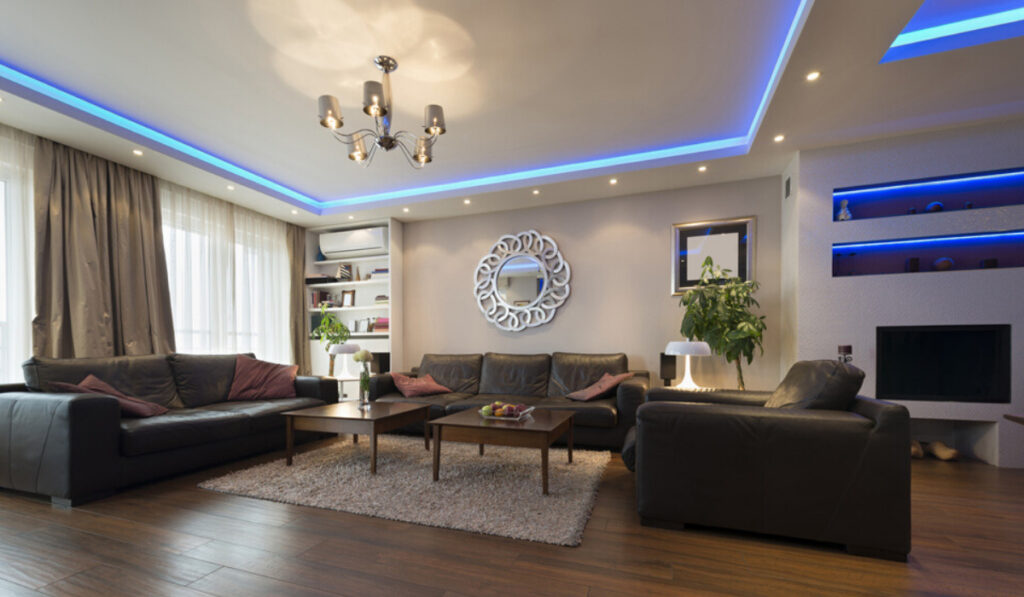Lighting can either enhance or detract from the aesthetics of your home. Lighting can make or break a room’s aesthetic.
Natural light is to be brought in.
There are no lighting solutions like a house bathed in natural light for a feeling of space and comfort. In the end, no substitute will ever be acceptable. It doesn’t matter if it’s summer or winter; the sun’s goodness may assist an area in many ways, notably by preventing odours and mould growth.
Remember the room’s primary function.
Before putting up light fixtures, you should consider where you may relax after a hard day at the office, for example, if it is your living room. In addition, it’s where you’ll be hosting visitors. Because of this, the lighting in this space should be both welcoming and soothing. Ambient and mood lighting in equal measure will do the trick here. Avoid harsh lighting in this room because it is the most often utilised area of the house.
Consider the height of the ceiling, as well as other factors.
You need to know the height of your ceiling before purchasing hanging light fixtures. Some lights come with adjusted wires or rods, but not all do. You don’t want to end up with a light that’s too high or too low.
As a general rule of thumb, the bottom of a lamp should dangle 12 to 20 inches below an average 8-foot ceiling. Every foot of ceiling height adds three inches.
Hopping between tables.
The recommended distance between the bottom of a lamp and the surface of a table or kitchen island should be 28 to 34 inches. The size of the light, however, has an impact. The lower the light is, the easier it is to raise it, and vice versa.
Make a plan and stick to it.
Consider what lighting you want if you’re planning new construction or remodelling. Before construction begins, consider how many pendant lights you want over your dining table.
Don’t forget your stuff.
Cable swags might be an attractive alternative to save the price and difficulty of replacing your home’s electrical wiring. For a more industrial aesthetic, tie the wire to the ceiling and hang it freely from a bar or hook.
Increase the volume.
Don’t rely solely on downlights for illumination. To avoid harsh downlighting, try wall sconces or uplighting to create a more welcoming atmosphere.
Make the most of your radiance.
The type of lightbulb is just as crucial as the light fixture itself. In halogen, compact fluorescent, and LED lamps, warm or cold colours are found. The sort of glow you desire is mostly a matter of personal preference, just like the colour of your walls.
You may want to brighten your room’s colder tones with a lightbulb that produces a warm glow. If the room is softer, more muted lights would be preferable lighting solutions.
Turn on the stair lights and make a grand entrance.
Since stairs may be dangerous, especially at night, installing lights on the stair risers is advantageous. Staircases are commonly enclosed, so consider lighting them from the sides or incorporating lights into the risers as a design feature.
Lights up with a toe-kick for good looks.
Adding lights to your toe-kicks isn’t just for show; it also has practical applications. The bottom of the base cabinets may be lit with strip lighting to produce a stunning night light.
Never be afraid to use colour.
Adding a brightly coloured light fixture to an otherwise neutral area may provide a dash of colour and intrigue. When the light is switched on, coloured shades may do wonders.
Put your best foot forward.
Adding lights to a room may help create an atmosphere. Using lights instead of wall art can create ambient lighting if the essential lighting is already in place.

